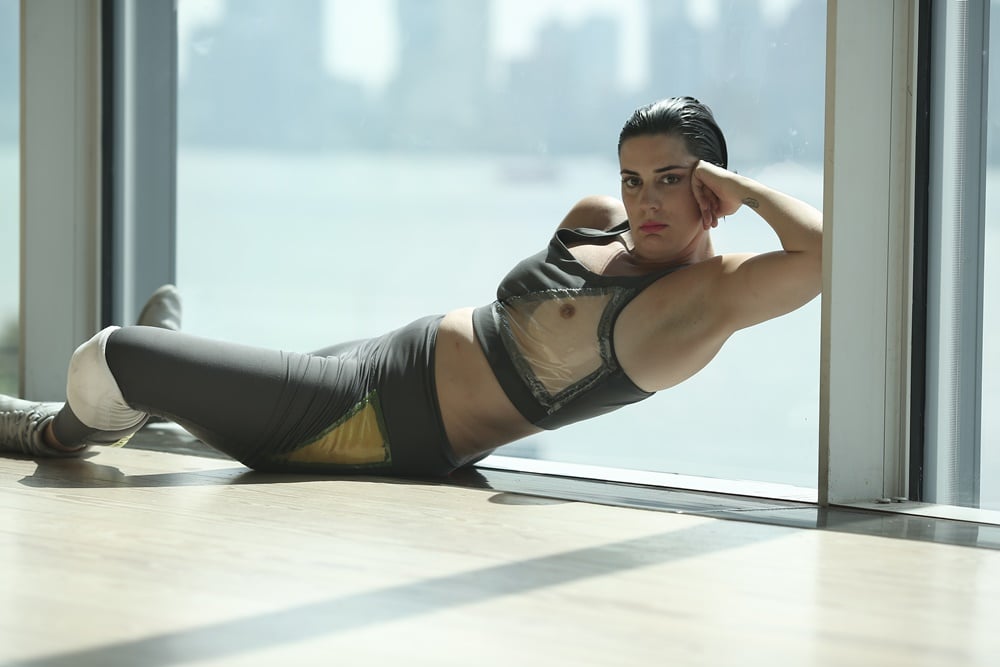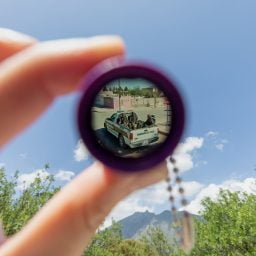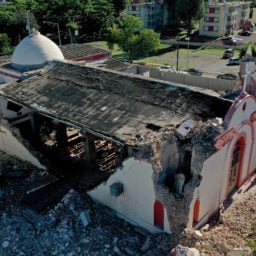In the increasingly heated discussions about the Whitney Museum’s board vice chair Warren Kanders, some advocates and artists have noted that they are not so far removed from conflicts where tear gas produced by Kanders’s company Safariland might be used.
Now, Puerto Rican artist and Whitney Biennial performer Nibia Pastrana Santiago has come forward to say that she was among the hundreds of Puerto Rican citizens who she says were “peacefully manifesting” at La Fortaleza, the official residence of Puerto Rico’s governor, when she was personally affected by tear gas.
Governor Ricardo Rosselló, who has been accused of corruption and homophobia and criticized for steep budget cuts to health care and education, is expected to resign today following weeks of protests. In the days leading up to his anticipated departure, Pastrana Santiago says police have been firing teargas on protesters almost every night, including the evenings she demonstrated on Wednesday, July 17 and Monday, July 15.
“I couldn’t breathe, my eyes are burning, we were following each other…running and holding strangers hands…’cause you can’t see,” Santiago told artnet News of the impact of the tear gas. “I felt like drowning, I felt like fainting. Fortunately there were colleagues with remedies. Once I caught my senses again, ’cause really the gasses disorient you, we went back to the line.”
Pastrana Santiago says she was not expecting to contend with tear gas during the second gathering, since the protest was peaceful. “I didn’t think that was possible, but the police and task force started throwing the canisters,” she said. “I didn’t have a mask or ‘pañuelo.'” She cited reports in Hyperallergic and the Nation that state that some of the tear gas used against protesters in San Juan is believed to have been produced by Safariland.
Neither Safariland nor the Whitney responded to a request for comment by publication time. In an earlier letter to the Whitney community, Kanders had stated that “when faced with a chaotic situation, law enforcement officers have few options for crowd control, and non-lethal products (including “tear gas”) are on the list. Safariland’s role as a manufacturer is to ensure the products work, as expected, when needed. Safariland’s role is not to determine when and how they are employed.”

Nibia Pastrana Santiago. Whitney Biennial 2019, Photograph © Paula Court
In recent days, a total of eight artists have asked that their work be removed from the Whitney Biennial in response to Kanders’s continued leadership role at the Whitney. But Pastrana Santiago, who is based in San Juan and whose choreographed performances explore notions of time and territory, says she went into the exhibition with her eyes open to the issue—and plus, because her work is a performance that is now over, the question of whether she would remove it now is moot.
In early June, Santiago contributed thee separate performances to the biennial under the title objetos indispuestos, inauguraciones suspendidas o finales inevitables para un casi-baile. “As a 2019 Whitney Biennial artist, I assume the uncomfortable position to make work in this political climate,” she said. “I believe in tactical use of performance and finding cracks to push, resist, and occupy temporary contexts to make visible how institutions condition and surveil our bodies.”
She notes that she was among the dozens of artists participating in the biennial who signed a letter calling for Kanders to resign. But she takes a more philosophical approach to her own work in the show.
“I have been asked if I will ‘remove’ my work from the biennial. I must say I love this question, as it poses an almost philosophical question about body and time-based work…. My work is not something that can be uninstalled, the work in itself is my body in action; my body since last week is marching, dancing, screaming, sweating and protesting, first the renounce of #ricardorosello and secondly: again (since I signed the Verso letter along other biennial artists) asking for the removal of Kanders from the Museum Board.”









